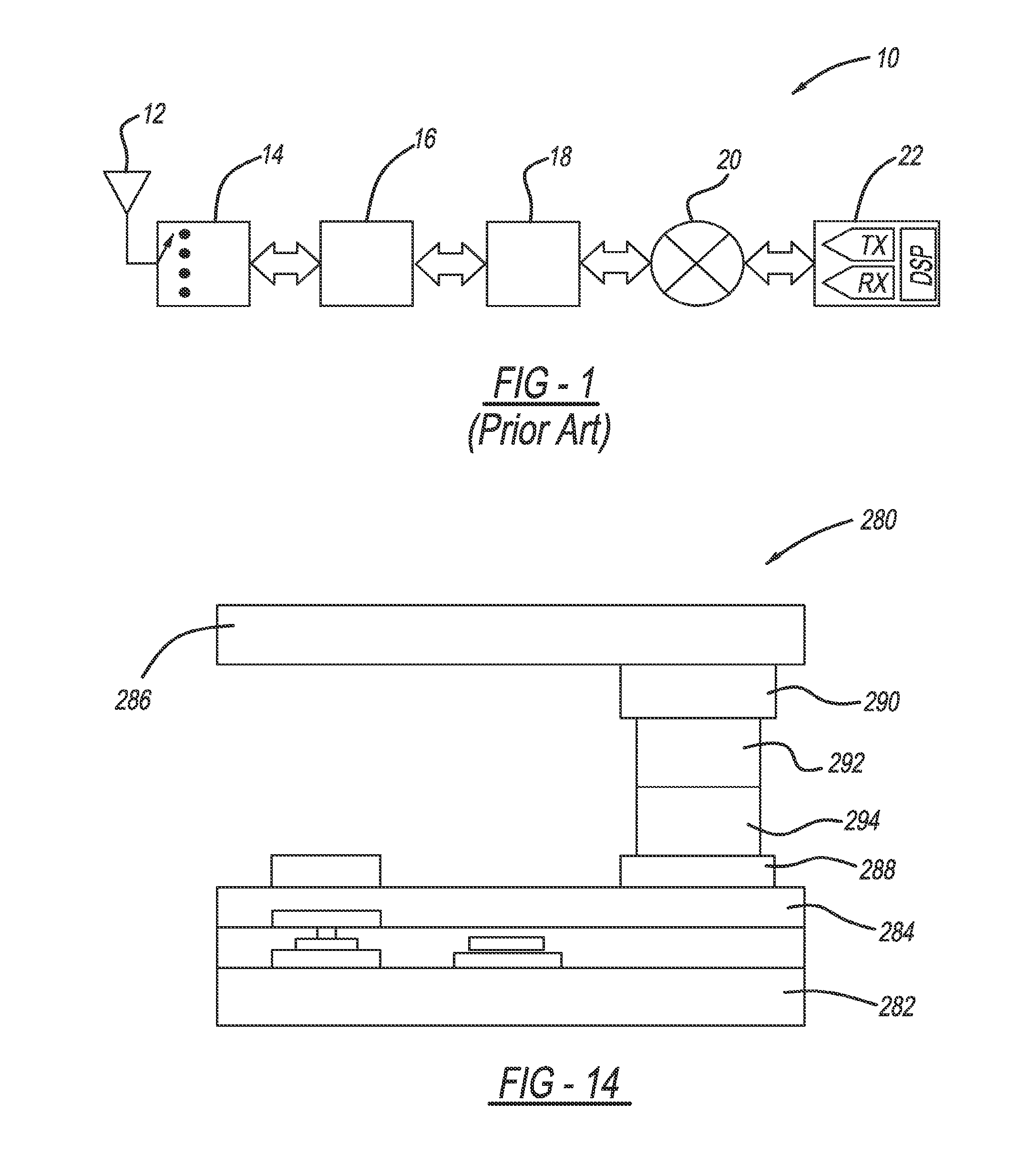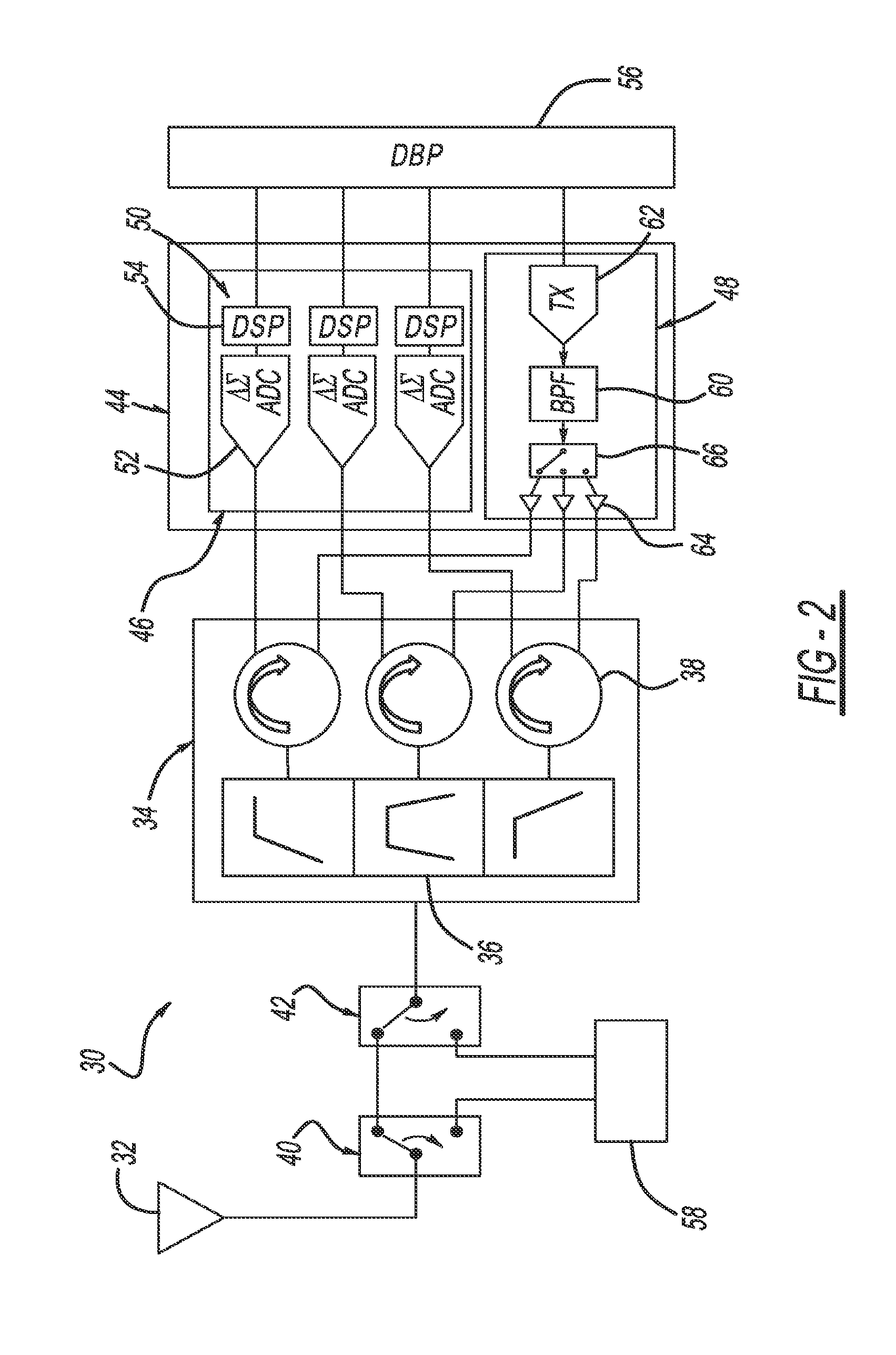Optimized data converter design using mixed semiconductor technology for flexible radio communication systems
a data converter and flexible technology, applied in the field of cellular radio architecture, can solve the problems of inflexibility with regard to the changing standards and modes of operation, prohibitively expensive and nuisance, and inflexible to support emerging uses
- Summary
- Abstract
- Description
- Claims
- Application Information
AI Technical Summary
Benefits of technology
Problems solved by technology
Method used
Image
Examples
Embodiment Construction
[0040]The following discussion of the embodiments of the invention directed to a cellular radio architecture is merely exemplary in nature, and is in no way intended to limit the invention or its applications or uses. For example, the radio architecture of the invention is described as having application for a vehicle. However, as will be appreciated by those skilled in the art, the radio architecture may have other applications other than automotive applications.
[0041]The technologies discussed herein are applicable to more than cellular wireless technologies, for example, WiFi (IEEE 802.11) technologies. Further, the cellular radio architecture is presented as a fully duplexed wireless system, i.e., one that both transmits and receives. For wireless services that are receive only, such as global positioning system (GPS), global navigation satellite system (GNSS) and various entertainment radios, such as AM / FM, digital audio broadcasting (DAB), SiriusXM, etc., only the receiver des...
PUM
 Login to View More
Login to View More Abstract
Description
Claims
Application Information
 Login to View More
Login to View More - R&D
- Intellectual Property
- Life Sciences
- Materials
- Tech Scout
- Unparalleled Data Quality
- Higher Quality Content
- 60% Fewer Hallucinations
Browse by: Latest US Patents, China's latest patents, Technical Efficacy Thesaurus, Application Domain, Technology Topic, Popular Technical Reports.
© 2025 PatSnap. All rights reserved.Legal|Privacy policy|Modern Slavery Act Transparency Statement|Sitemap|About US| Contact US: help@patsnap.com



